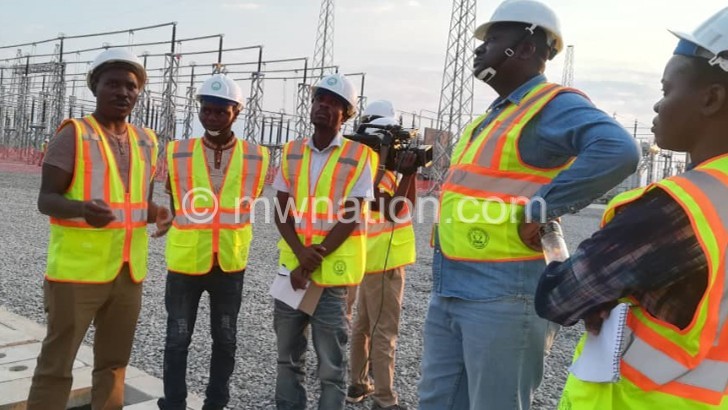Govt takes stock of energy compact
Minister of Energy Newton Kambala says the $350.7 million (about K257 billion) Millennium Challenge Corporation (MCC) energy compact has had a positive impact on the country’s power sector since its completion in September 2018.
Kambala was reacting to an MCC March 2021 evaluation brief titled Improving Power Quality and Reliability in Malawi, which showed that despite completing the infrastructure works on time and budget, the energy compact fell short of achieving its objectives to improve the availability, reliability, and quality of the power supply.

However, the minister said although the evaluation was released last month, the actual survey upon which the report is based was done between October and December 2019, observing if another evaluation was to be carried out today, the report would be different as the situation on the ground is significantly different.
Kambala said that although the Phombeya – Nkhoma 400kV line is not being used to its full capacity yet, its introduction into the network has contributed to the overall reduction of transmission losses from 5.6 percent to 5.9 percent to the region of 5.2 percent to 5.4 percent with the full benefits to be realised upon completion of the Mozambique-Malawi Interconnection (Moma) project which is currently ongoing.
He said: “With respect to system reliability, the Lilongwe ring has brought about tremendous reliability in Lilongwe City with practically no transmission line outage ever since the installation of the new ring on steel towers.
“Previously there would be at least 4 planned outages of around 9 hours duration and around three permanent faults per year from 2016 to 2017 with an average fault duration of 7.2 hours. All these negative occurrences have since been reduced to minimal levels.”
The minister indicated that with respect to system stability, the Central and Northern Regions have benefited a lot as there is now flexibility of supply into Lilongwe from a previous scenario of only one 132kV sub-station at Kanengo and ather well-equipped 132kV substation at Bunda T as well and substation at Kang’oma.
“Maintenance cost for 66KV Lilongwe Ring which were being budgeted at K36 million have reduced to the region of K20 Million in maintenance materials.
A major benefit of the compact, according to Kambala, is the preparatory works for power interconnectors; the Mozambique-Malawi interconnection set to land at Phombeya and the Zambia 400kV interconnector to land at Nkhoma with just landing bay.
In the evaluation, among others, MCC pointed out that power was transmitted more efficiently to high-consumption areas and that transmission system losses declined, but power supply cuts remained pervasive, largely due to insufficient generation capacity amid rapid growth in demand with persistent distribution losses, suggesting grid capacity constraints remained a challenge.
The evaluation also pointed out that by compact closeout, transmission losses were nearly halved from the pre-compact level of 10.5 percent, but distribution losses showed almost no change and remained at 12 percent.
MCC figures show that between January 2017 and December 2019, there were only 43 days without load shedding, and unplanned outages increased slightly in both frequency and duration, rather than decreasing as expected.
Consequently, firms reported that on average, the number of outages per year rose from 120 at baseline to 192 at endline, forcing over 80 percent of firms to shut down at least some of their operations during outages.
At the same time, connection time and costs have not been reduced because end users wait, on average, 7.5 months to get a new connection.
The compact (2013-2018) aimed to address electricity supply challenges through the $255.4 million IDP, which invested in the national electricity grid’s generation, transmission, and distribution infrastructure to increase grid capacity and stability.
Energy expert and former Electricity Supply Corporation of Malawi (Escom) chief executive officer Kandi Padambo last month said the real positive impact on our economy will be spurred when we have more than matched one generation capacity with our ever increasing demand.
Malawi has one of the lowest electricity access rates at 11 percent compared to 42 percent in low-income countries and 48 percent in sub-Saharan Africa, according to World Bank data.
There is also a glaring inequality among the rich and poor when it comes to access to electricity as the poorest 20 percent of Malawians have one percent electrification rate while the richest 20 percent have 31 percent electrification rate. n






One Comment